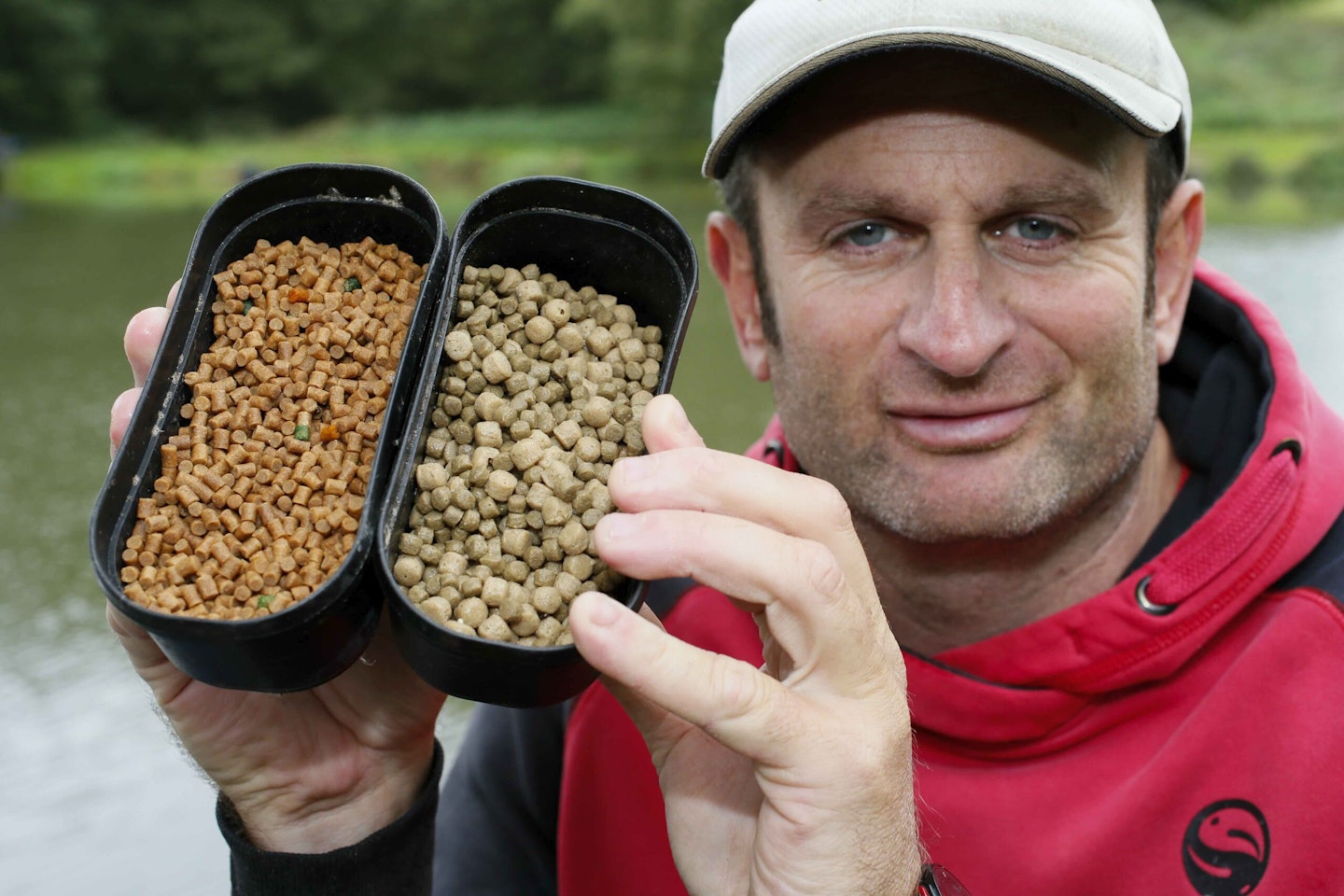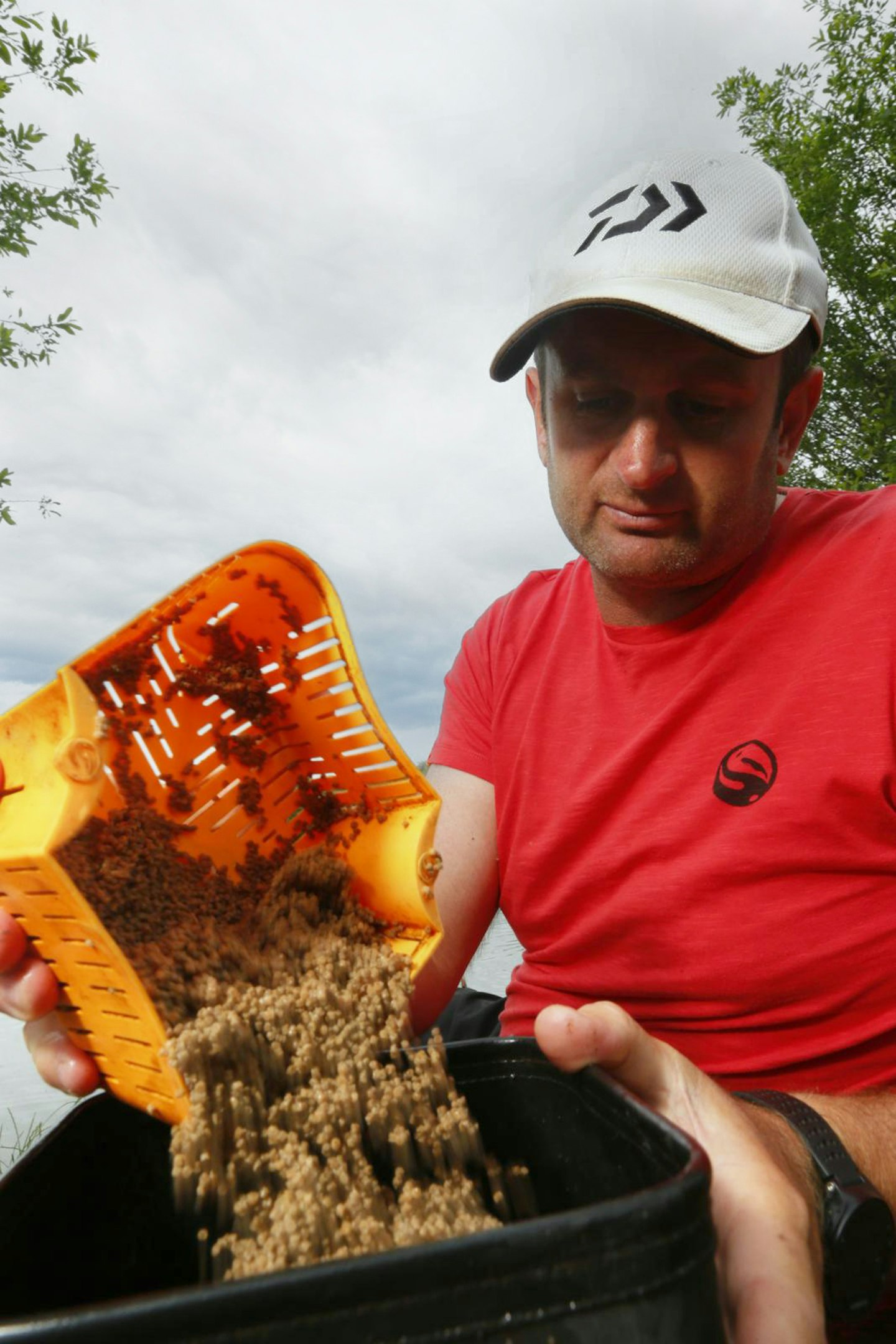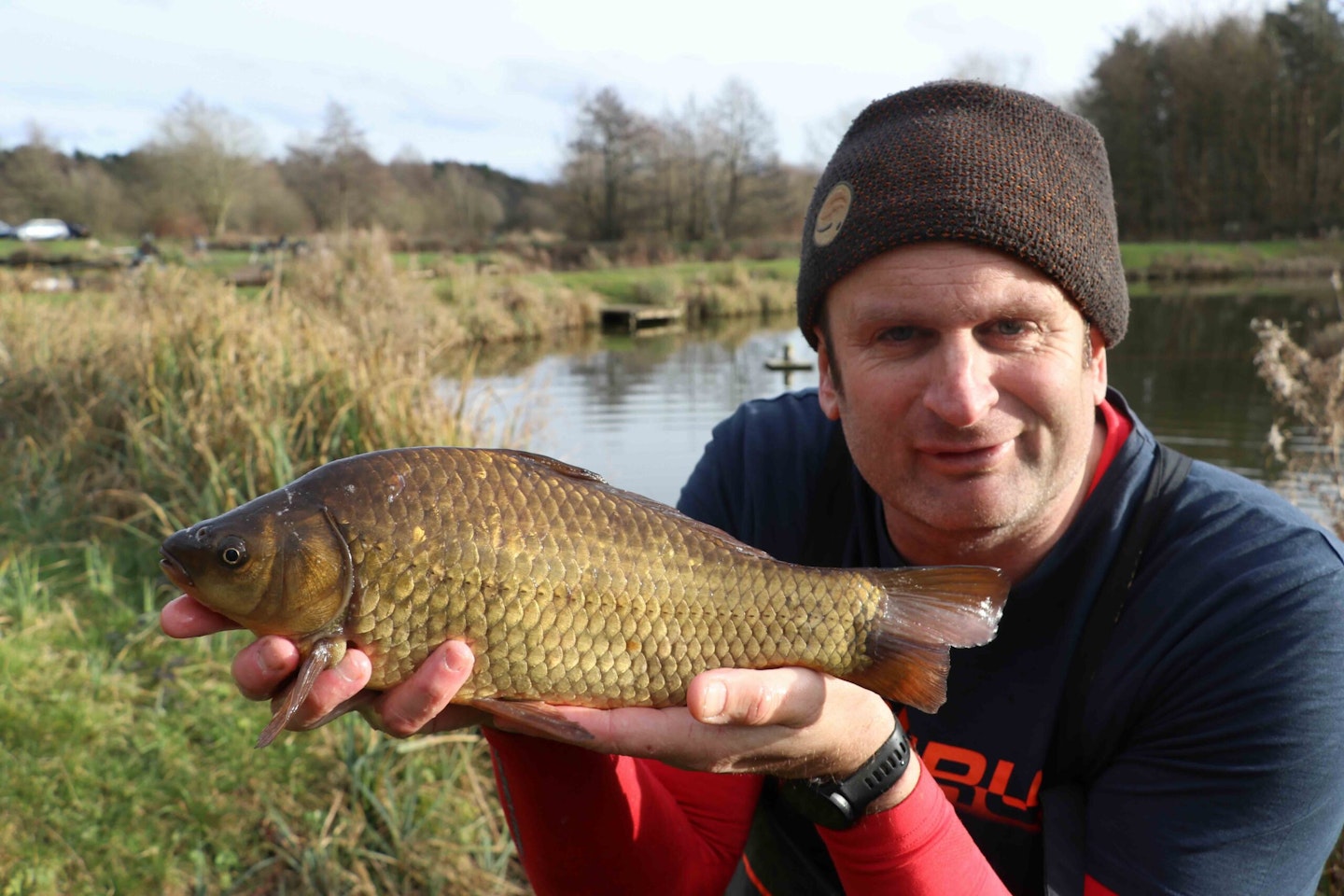Contrary to popular belief, fishing for F1s is far from easy, especially as the temperature starts to drop.
One point I will make, though, before we go into any depth about pellets, and that is never to go F1 fishing with just one bait option. When I did a lot of it, I always had two options – pellets and maggots.
Normally this meant starting on pellets for a quick burst, then finishing on maggots. You always had to build the peg with those, whereas pellets tended to work instantly when you got it right – by which I mean fishing in the right place and feeding the right amount of bait.
Rig and bait basics
So, first let’s look more closely at bait. As far as pellets go, it’s all about 2mm wetted-down micros and expanders for the hook. You can carry a variety of different-sized expanders but, for me, 4mm pellets are the stand-out ones. It really is as simple as that.
Rig-wise, for venues like Tunnel Barn Farm and Packington Somers, floats like the Guru MW F1 slims re my go-to. I prefer the wire- stemmed versions, as they are that little bit more stable, and sit up quicker.
For fishing in 5ft of water, if conditions are good, I’ll go with the 0.3g version. I’m a big believer that light floats will get you more bites, especially as the water starts to clear.
My mainline is typically 0.13mm Guru N-Gauge, with a 6ins hooklength of 0.10mm fluorocarbon to a size 16 or 18 F1 pellet hook.
THE BEST FISHING POLES WILL IMPROVE YOUR FINESSE TO HELP YOU CATCH MORE F1's.

Get your shotting right
My shotting is a bulk of No11s, with the bottom one 6ins from the hook and the rest of the droppers spaced at 1cm intervals above it. This is a tighter bulk than I would use with maggots, but I always feel with pellet fishing that you need more positive shotting to magnify bites.
Elastic choice depends on the size of the fish, but pink Hydro is a great winter F1 elastic, especially for fish in the 1lb-3lb bracket.
Above the float, I always like to use a string of No9 backshots. These are spaced at 3ins intervals, with the first shot 3ins above the float. The reason I do this is so that I stay tight to the float, and this in turn means I hit far more bites. In fact it makes it impossible to not stay tight – if I drop the pole, the backshots will sink the float!
NEED HELP FITTING AND CHOOSING THE RIGHT POLE ELASTIC? FOLLOW THESE TIPS IN OUR EXPERT GUIDE.

Keep moving
On to the subject of feeding , little-and-often is the key, so a small pole pot with a sprinkle- type lid is essential so that you can tap pellets out, as and when you need to.
Normally when pellet fishing, unless I have prior information that the F1s are all held up in shallow water, I’ll look to start short and chase them about.
What I mean by that is, I’m constantly starting new swims to keep in touch with the fish. Confused? Well, let me explain. What normally happens is, you’ll kick off on a top kit and one section, catch four or five quick F1s off six or seven feeds and then it’ll completely die off.
When this happens, it’s generally impossible to bring the swim back to life, so what you need to do is move. When I say move, I’m talking about a relatively small one. If the depth is the same going 2ft to the left or right, that’s often enough to get another burst of F1s. But, if this isn’t the case, I’ll simply add another section and start over again.
F1'S CAN BE TRICKY TO CATCH, IMPROVE YOUR ANGLING WITH OUR BEST POLE FISHING TIPS.

What I will say is, when you move with pellets, if it’s a good move then the response should be instant, within two feeds. If no signs are forthcoming, I’d be thinking I needed to move again. Pellets are a quick-response bait, so, if I don’t get one, then chances are it’s because I’m fishing in the wrong depth or spot.
Still on the subject of feeds, it’s well worth mentioning amounts, as one of the issues with feeding 2mm micros is it’s easy to overfeed! As a guide, at the moment – with it being still quite mild – I would be looking to tap out 15 to 20 micros every feed. But when it gets properly cold, this will change to six micros.
I will add here that regular feeding is key. If you’re not catching, then bait falling through the water is the best chance you have to draw a few F1s into your swim. I like to feed about every 45 to 60 seconds to try to make something happen. If I get an indication, though, I will stop feeding to try and catch the culprit.
Pellet fishing for F1s is very busy, technical fishing, and those who think the fastest and adapt the quickest will catch the most. Just don’t sit there waiting for it to happen – make it happen through regular feeding and starting new swims at the right time.
THE BEST FISHING SEATBOXES WILL GIVE YOU THE BEST PLATFORM TO FISH A POLE FROM.

